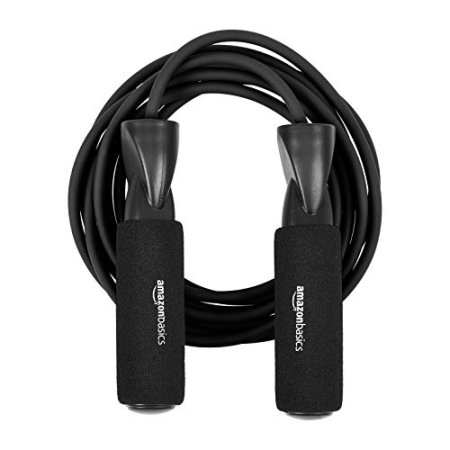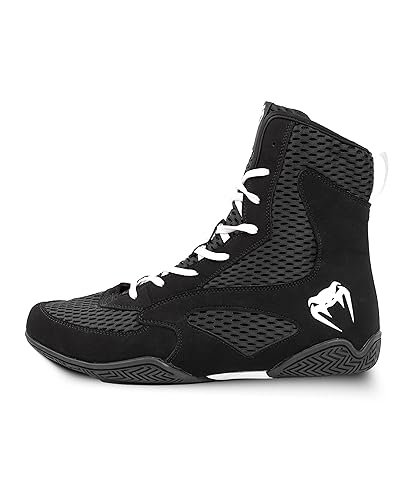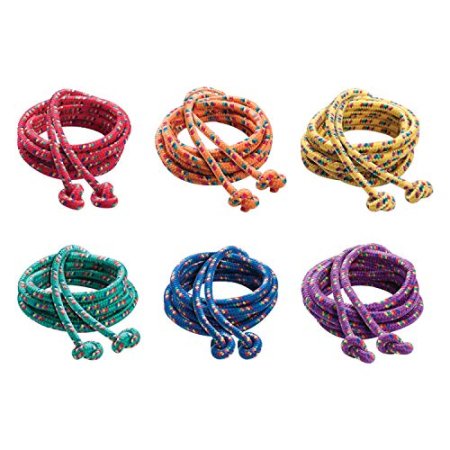The Ultimate Guide to Jumping Ropes: Everything You Need to Know
Introduction to Jumping Ropes
Jumping ropes, a timeless piece of fitness equipment, are often associated with childhood games and simple workouts. But don’t let their simplicity fool you—these ropes offer a wealth of benefits that can enhance any fitness routine.
What are Jumping Ropes?
A jumping rope, or skip rope, is a piece of exercise equipment consisting of a length of rope with handles at each end. The user swings the rope over their head and under their feet, jumping over it with each revolution. This action provides a full-body workout that engages multiple muscle groups.
Brief History of Jumping Ropes
The concept of jumping ropes dates back to ancient times. Early evidence suggests that Egyptians used ropes for exercise around 1000 BC. Over the centuries, the jumping rope evolved from a playful activity into a staple in fitness regimens, gaining popularity for its effectiveness and convenience.
Benefits of Using Jumping Ropes
Jumping ropes offer a range of benefits that make them a valuable addition to any workout routine.
Cardiovascular Health
Jumping rope is a fantastic cardiovascular exercise. It gets your heart pumping and improves overall heart health. Regular use can help reduce the risk of heart disease by strengthening the heart and increasing endurance.
Weight Loss and Calorie Burning
If you're aiming to shed some pounds, jumping rope is an effective calorie-burning activity. In just 10 minutes, you can burn up to 130 calories, depending on the intensity of your workout. It's a great way to support weight loss and manage body fat.
Coordination and Agility
Jumping rope enhances coordination and agility. The rhythmic nature of the exercise improves hand-eye coordination, timing, and footwork. It’s particularly beneficial for athletes who need to refine their reflexes and balance.
Bone Density Improvement
Regular jumping and landing on your feet can help improve bone density. This weight-bearing exercise strengthens bones and reduces the risk of osteoporosis. It's an excellent addition to routines aimed at maintaining bone health.
Types of Jumping Ropes
Different types of jumping ropes cater to various needs and preferences. Here’s a breakdown of the most common types:
Basic Skipping Rope
The most straightforward type, often made of lightweight materials like plastic or cloth. Ideal for beginners and casual users, it’s simple and cost-effective.
Speed Ropes
Designed for advanced users, speed ropes are typically made from thin, durable materials and are built for high-speed rotations. They are perfect for improving speed and technique.
Weighted Ropes
These ropes have added weight in the handles or the rope itself. They provide a more intense workout by increasing resistance, which can help build strength and endurance.
Adjustable Ropes
Adjustable ropes allow users to change the length of the rope, making them versatile for different heights and preferences. They’re great for families or shared fitness spaces.
Beaded Ropes
Featuring plastic or rubber beads along the rope, beaded ropes are durable and often used in rhythmic gymnastics. The beads help the rope move smoothly and provide a visual aid for timing.
Dual-Directional Ropes
These ropes allow for forward and backward rotations, offering a varied workout that can enhance coordination and overall skill.
How to Choose the Right Jumping Rope
Selecting the right jumping rope depends on various factors, including your fitness goals, height, and experience level.
Material and Durability
Consider the material of the rope. PVC and rubber are common for basic ropes, while steel cables are used for speed ropes. Durability is crucial, especially if you plan to use the rope frequently.
Handle Design and Comfort
Handles should be comfortable to grip and well-suited for your hand size. Look for ergonomic designs with cushioning or non-slip grips to enhance comfort during workouts.
Rope Length and Adjustability
Ensure the rope length is appropriate for your height. Many ropes are adjustable, which is a significant advantage for finding the perfect fit.
Price Range and Quality
Jump ropes come in various price ranges. Higher-quality ropes may cost more but often offer better durability and performance. Balance your budget with the features you need.
Proper Technique for Jumping Rope
Using the correct technique is essential for maximizing the benefits of jumping rope and avoiding injury.
Basic Jumping Technique
Start by holding the handles with a relaxed grip. Swing the rope over your head and jump as it approaches your feet. Keep your jumps low and your elbows close to your sides.
Advanced Techniques and Tricks
Once you're comfortable with the basics, you can try advanced techniques like double unders (jumping twice per rope swing), crisscrosses, or high knees to challenge yourself and vary your routine.
Common Mistakes to Avoid
Avoid jumping too high, which can strain your knees and ankles. Also, ensure you use a proper rope length to avoid tripping and maintain a smooth rhythm.
Incorporating Jumping Rope into Your Workout Routine
Jumping rope can be seamlessly integrated into various workout routines, whether you’re warming up, doing a full workout, or combining it with other exercises.
Warm-Up Exercises
Use jumping rope as an effective warm-up to increase your heart rate and prepare your muscles for more intense exercise. Aim for a 5-minute session to get your body ready.
Jump Rope Workouts for Beginners
Start with short intervals, such as 30 seconds of jumping followed by 30 seconds of rest. Gradually increase the duration as your fitness improves.
Advanced Jump Rope Workouts
For a more intense workout, try incorporating jump rope into high-intensity interval training (HIIT) or circuit training. Combine it with exercises like burpees, push-ups, and squats for a comprehensive routine.
Combining Jumping Rope with Other Exercises
Pair jump rope with strength training or other cardio exercises to create a balanced workout. It complements activities like running, cycling, or weightlifting.
Jumping Rope for Different Fitness Levels
Jumping rope is versatile and can be adapted for various fitness levels.
Beginners
Start with basic techniques and short sessions. Focus on building stamina and coordination before progressing to more advanced moves.
Intermediate Users
Increase the intensity by extending your workout duration and incorporating advanced techniques. You might also add weighted or speed ropes for added challenge.
Advanced Athletes
Incorporate jumping rope into high-performance training regimens. Use it as part of agility drills, speed training, or competitive routines.
Maintaining and Caring for Your Jumping Rope
Proper care will extend the life of your jump rope and ensure it performs well.
Cleaning Tips
Wipe down the handles and rope with a damp cloth after use to remove sweat and dirt. For beaded ropes, use a mild soap solution if needed.
Storage Suggestions
Store your rope in a cool, dry place to prevent damage. Avoid leaving it in direct sunlight or damp environments.
Repair and Replacement
Check the rope regularly for wear and tear. Replace it if the rope shows significant damage or if the handles become loose.
Top Jumping Rope Brands and Products
Here are some popular brands and products known for their quality and performance:
Brand Reviews
- Rogue Fitness: Known for durable, high-quality ropes suitable for serious athletes.
- WOD Nation: Offers versatile, adjustable ropes ideal for various fitness levels.
- Speed Rope: Provides high-speed ropes designed for competitive jumpers.
Product Recommendations
- Rogue Fitness SR-1 Bearing Speed Rope: Great for speed and precision.
- WOD Nation Speed Jump Rope: Adjustable and well-suited for beginners and advanced users.
- Surge 3.0 Weighted Jump Rope: Ideal for those seeking a more intense workout.
FAQs About Jumping Ropes
What are the best jump ropes for beginners?
For beginners, a basic, adjustable rope with comfortable handles is ideal. Look for a rope that allows you to adjust the length and has a smooth, lightweight design.
How long should I jump rope each day for weight loss?
Aim for at least 10-15 minutes of continuous jumping rope, or integrate it into a longer workout session. Combining it with a balanced diet will maximize weight loss.
Can jumping rope help with muscle toning?
Yes, jumping rope can help tone muscles, especially in the legs, core, and arms. For enhanced muscle definition, incorporate it into a strength training regimen.
What is the ideal rope length for my height?
The rope length should be adjusted so that when you stand on the middle of the rope, the handles reach your armpits. Most ropes are adjustable to accommodate different heights.
How do I maintain my jump rope?
Regularly clean your rope, store it properly, and check for wear and tear. Replace it if necessary to ensure optimal performance.
Conclusion
Jumping ropes are a fantastic addition to any fitness routine, offering a range of benefits from cardiovascular health to improved coordination. By choosing the right type of rope, mastering proper techniques, and integrating it into your workout regimen, you can maximize the effectiveness of this versatile tool. Whether you're a beginner or an advanced athlete, jumping ropes can enhance your fitness journey and bring new energy to your workouts
















































